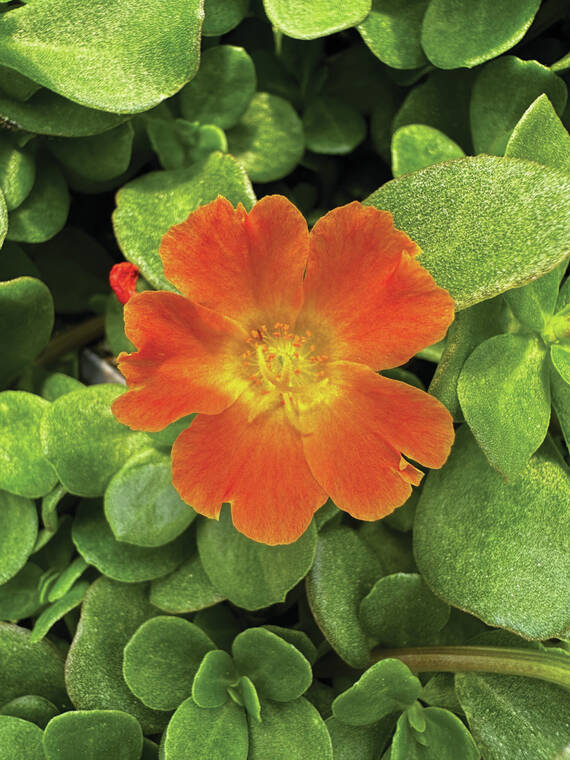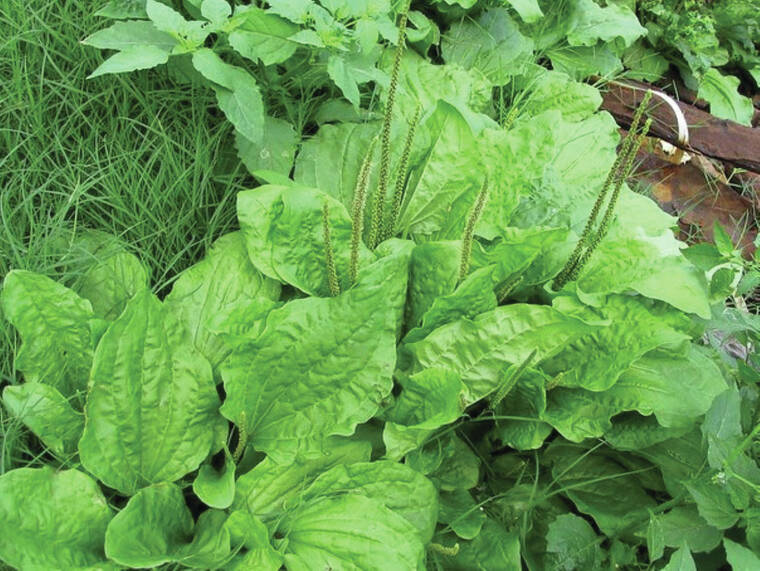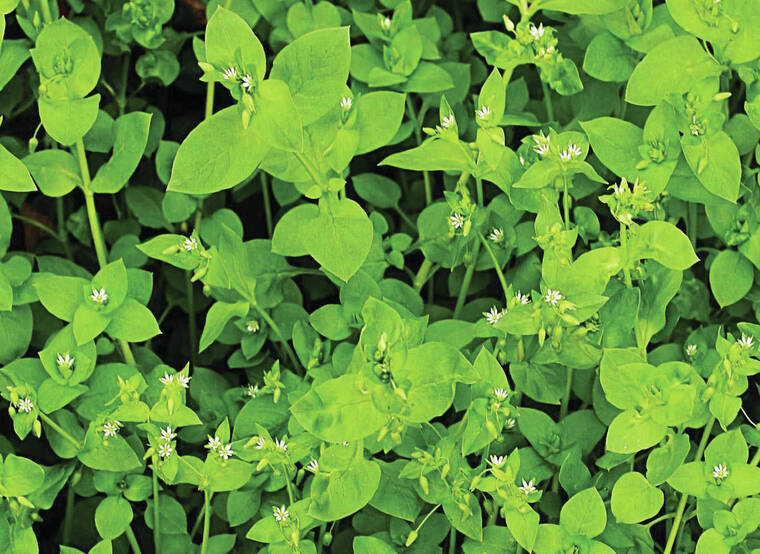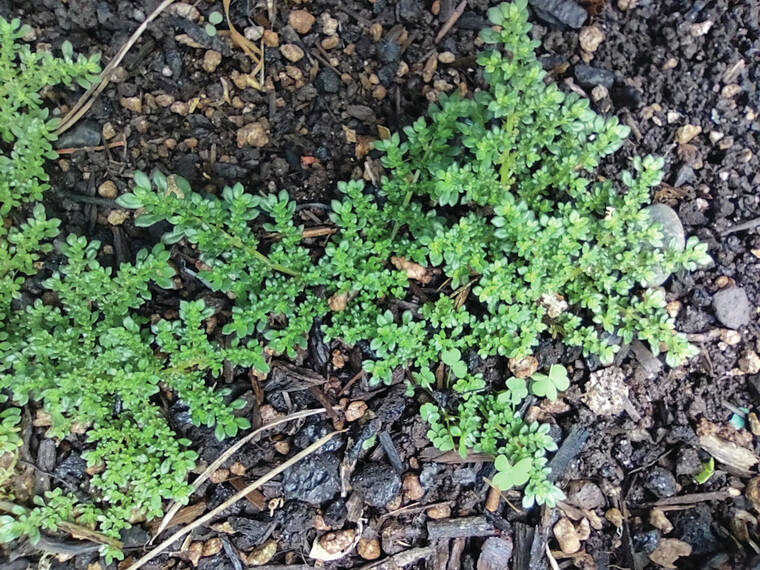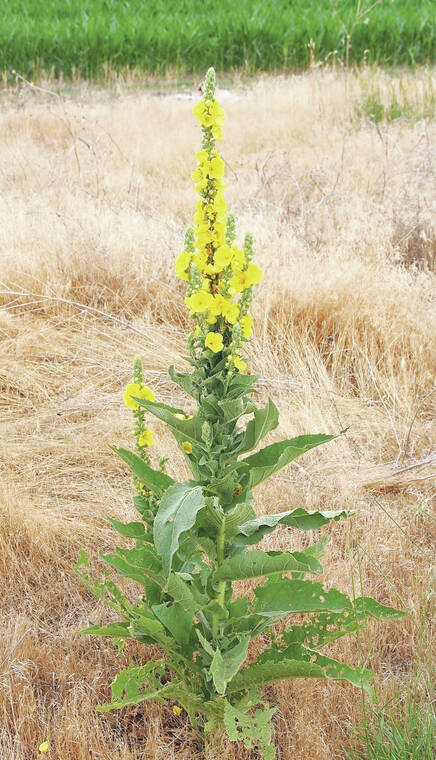Although a gardener might consider weeds their enemy, some that are commonly found in our gardens have beneficial properties. Instead of seeing them as evil, you might want to know ways they can serve as culinary treats or as medicinal remedies. Hopefully, knowing the benefits of some weeds will increase your respect for them, even if you decide to remove them rather than using or consuming them.
Do be careful to positively identify any plants that you eat or use medicinally. Also, avoid plants that may have been exposed to chemicals or other pollutants. Start by using these plants sparingly in case of potential allergies or interactions with prescription drugs. Do take a second look at these six examples and if you want to actually use them or eat them, go online where you can get much more information on each of them.
Artillery plants (Pilea serpyllacea) are a very common weed in Hawaiian gardens. They can also provide an interesting ground cover in full sun or shady areas. They have textured green foliage that can add interest around specimen plants or in a container.
This weed has been used as a remedy for several ailments, including infections, gastrointestinal issues, and insomnia. It is typically used in teas or tinctures. In the Antilles, a sweetened decoction from the roots is used as a diuretic. The crushed leaves can used to heal sores or bruises. In some areas, the leaves are used to treat diarrhea and asthma.
Chickweed (Stellaria media) is an invasive weed that has edible leaves, stems, and flowers. It crawls along the ground, with small, oval leaves, a round stem, and small white flowers
This is one of the best tasting weeds on this list. It has a sweet, grassy flavor making it a nice addition to salads or a sandwich. The leaves can also be used with or in place of basil in pesto. Dried leaves can also make a tasty tea.
Medicinally, it can be used to make a poultice, in an emollient for dry skin or in tea as a diuretic. The tea can also be used to treat a dry cough, bronchitis and other lung issues.
The common dandelion (Taraxacum spp.) has distinctive oblong, heavily toothed leaves and a well-known bright yellow flower. It is a common weed in lawns, fields, gardens and along roadsides here in Hawaii.
Dandelion plants have been consumed for centuries. Recipes for dandelion wine and dandelion detox tea have been shared throughout the ages. The plant is also used medicinally for digestive issues and for treating skin injuries.
All parts of the plant are edible. The young leaves have a grassy and mellow flavor, while the older leaves are more bitter. The leaves are edible raw or cooked while the flowers are best eaten raw or used to make wine. If you are plagued with dandelions, consider checking the online recipes for dandelion wine. Yes, it does exist. After about two weeks of fermentation, you can enjoy wine from your weeds.
The leaves, flowers, stems and roots of dandelions are often included in detox formulas that you can make or that are available commercially. A tasty detox tea can include dried dandelion roots cut into small pieces, combined with a cinnamon stick, some cardamon pods, black peppercorns, cloves and fresh ginger. Simmer the herbs in water for about fifteen minutes and enjoy.
Mullein (Verbascum spp.) is more common along roadsides and in disturbed areas than in our gardens. Mullein is easy to identify. It has gray, hairy leaves and a flower spike that can grow up to seven feet tall, covered in yellow blossoms that almost look like a stalk of corn.
You might want to look for it, as it has several medicinal uses. Though the seeds are not edible, the leaves and flowers are, when boiled. When boiled in milk, the leaves release a gelatinous sap that can be used to treat a sore throat or cough. You can also make tea from the leaves or flowers to treat a variety of lung issues, especially those caused by vog.
Common plantain (Plantago major) is another edible weed with a long history. Plantain is as common as dandelion in some areas. Look for the wide, oval leaves and long, green seedy spikes that follow the white flowers. Plantain is a common sight in lawns and disturbed areas, especially those with compacted soil. Native Americans called plantain “white man’s footprint” because Europeans brought it with them everywhere they went, and the plant quickly became established. Though bad news for our gardens, plantain is good news for weed eaters.
You can eat the leaves and seeds. The young leaves are tasty when fresh, while the older ones are better cooked. Plantain leaves may be used fresh over a wound, or boiled and mashed as a poultice. Also, you might try eating them battered and fried.
The fresh seeds can be added to breads or crackers. Native Americans ground the seeds to make a wheat flour alternative. The seeds can also be roasted or boiled and used as a laxative as they contain psyllium fiber. Several plantain species are known commonly as psyllium and P. ovata and P. psyllium are actually used to make the fiber supplement. The leaves also have a mild laxative effect, while the effect of the seed is more pronounced so use cautiously.
Purslane (Portulaca oleracea) is cultivated in many areas, particularly the varieties known for their flowers. It often volunteers in garden beds as well as in disturbed areas or in sandy soil. It has small, succulent leaves that are a nice addition to a salad.
You can eat all of the aboveground parts of purslane. Flowers and leaves are tart and a little salty, making them a great addition to many dishes. The leaves are often used medicinally as a diuretic and anti-inflammatory.
Many other plants that we consider weeds have edible and beneficial parts. Check online to see if those in your garden have culinary or medicinal uses. Take a new look at your weeds and start tasting instead of killing.
Gardening Events
Saturdays:
• “Work Day at Amy Greenwell Garden” from 9 a.m. to 12:30 p.m.
Meet at the Garden Visitor
Center across from the Manago Hotel in Captain Cook. Come with a mask and prepared to practice social distancing. Volunteers can help with garden maintenance and are invited to bring a brown bag lunch. Water and snacks provided. Visit the website www.amygreenwell.garden/get-involved/volunteer-1/ and sign up for the weekly email for more information on work days.
Tuesday &Wednesday, August 9 &10:
• Invasive Pest Conference at the Blaisdell Center in Honolulu.
Presentations on invasive pests by UH faculty and associates. Keynote Speaker: Philip Andreozzi, USDA invasive species coordinator. Contact roshanm@hawaii.edu for more information or register at Eventbrite: https://www.eventbrite.com/e/667750087487.
Farmer Direct Markets
(Check websites for the latest hours and online markets)
Wednesday:
• “Ho’oulu Farmers Market” 9 a.m. to 2 p.m. at Sheraton Kona Resort &Spa at Keauhou Bay
Saturday: “Keauhou Farmers Market” 8 a.m. to noon at Keauhou Shopping Center. Information on their online market: keauhoufarmersmarket.com/onlinemarket
• “Kamuela Farmer’s Market” 7:30 a.m. to noon at Pukalani Stables
“Waimea Town Market” 7:30 a.m. to noon at the Parker School in central Waimea
“Waimea Homestead Farmers Market” from 7:30 a.m. to noon at the Waimea middle and elementary school playground
Sunday:
• “Pure Kona Green Market” 9 a.m. – 2 p.m. at Amy Greenwell Garden in Captain Cook
• “Hamakua Harvest” 9 a.m. to 2 p.m. at Hwy 19 and Mamane Street in Honoka’a
Plant Advice Lines
Anytime: konamg@hawaii.edu
Tuesdays &Thursdays: 9 a.m. to noon at UH-CES in Kainaliu – 322-4893 or walk in
Mon., Tues. &Fri: 9 a.m. to noon at UH CES at Komohana in Hilo 981-5199 or himga@hawaii.edu
Diana Duff is a plant adviser, educator and consultant living part time in Kailua-Kona.






